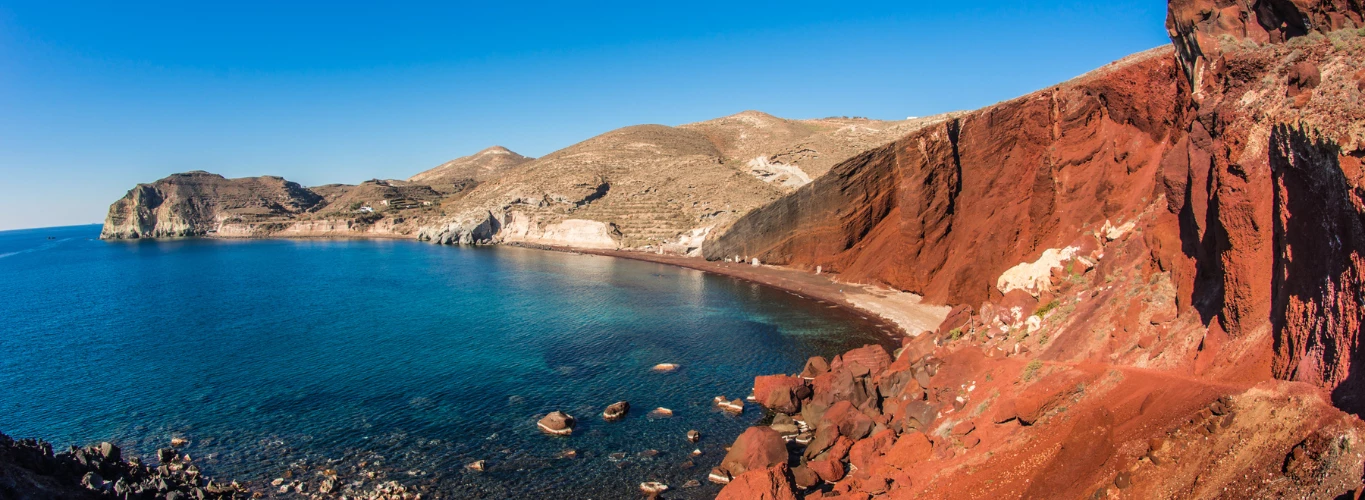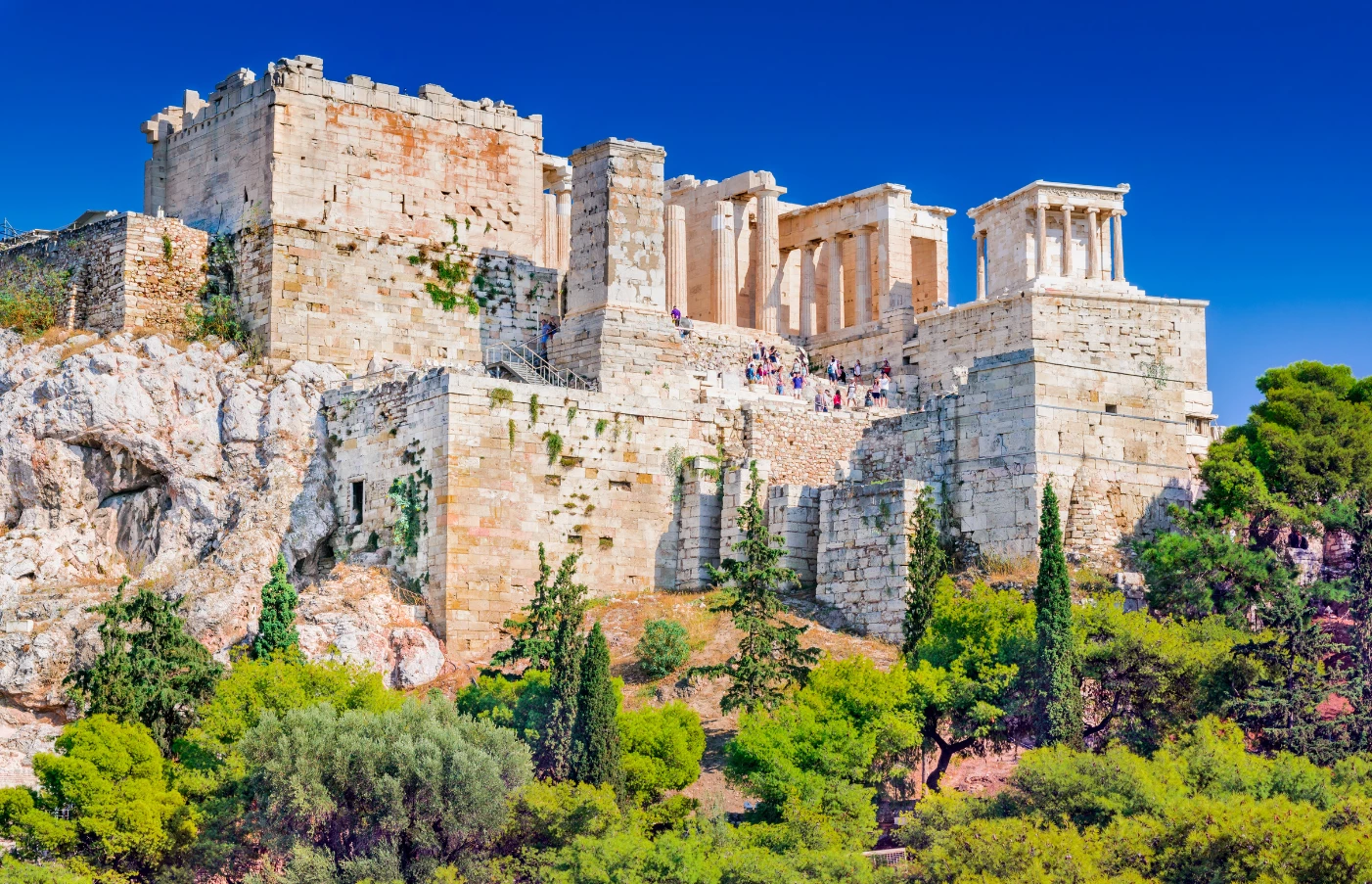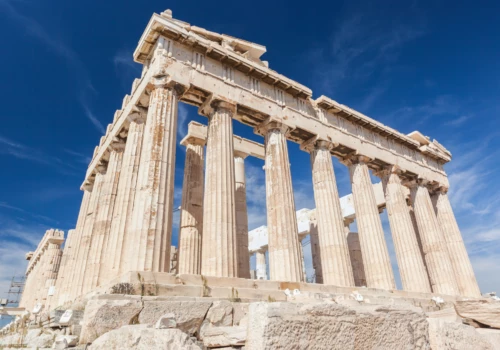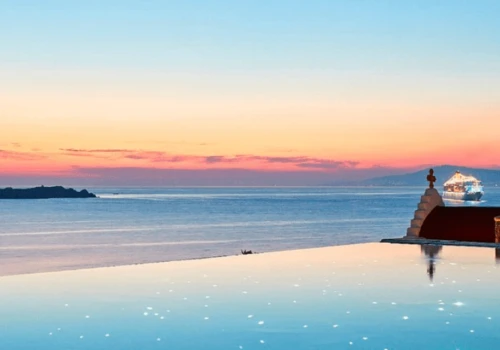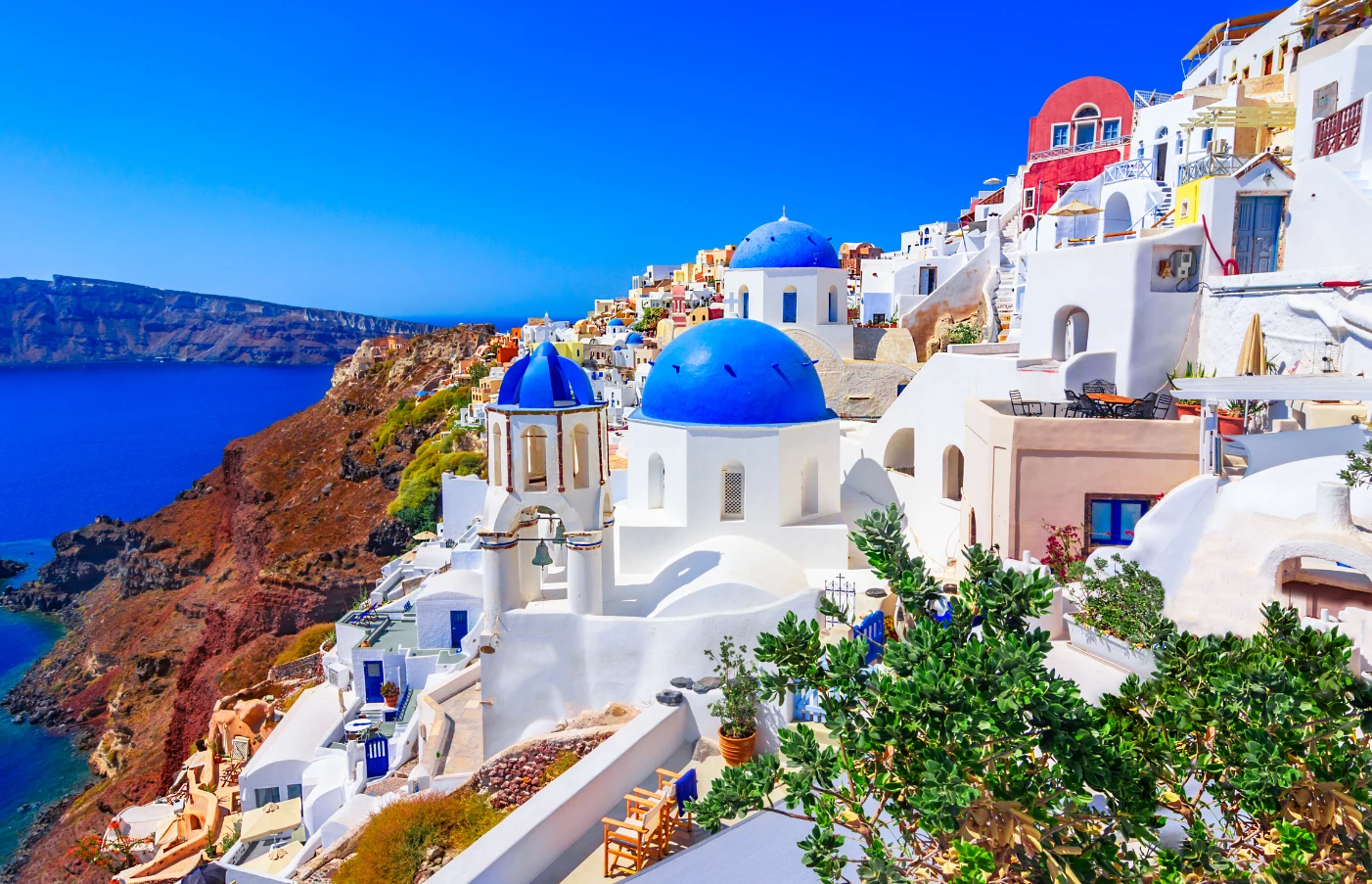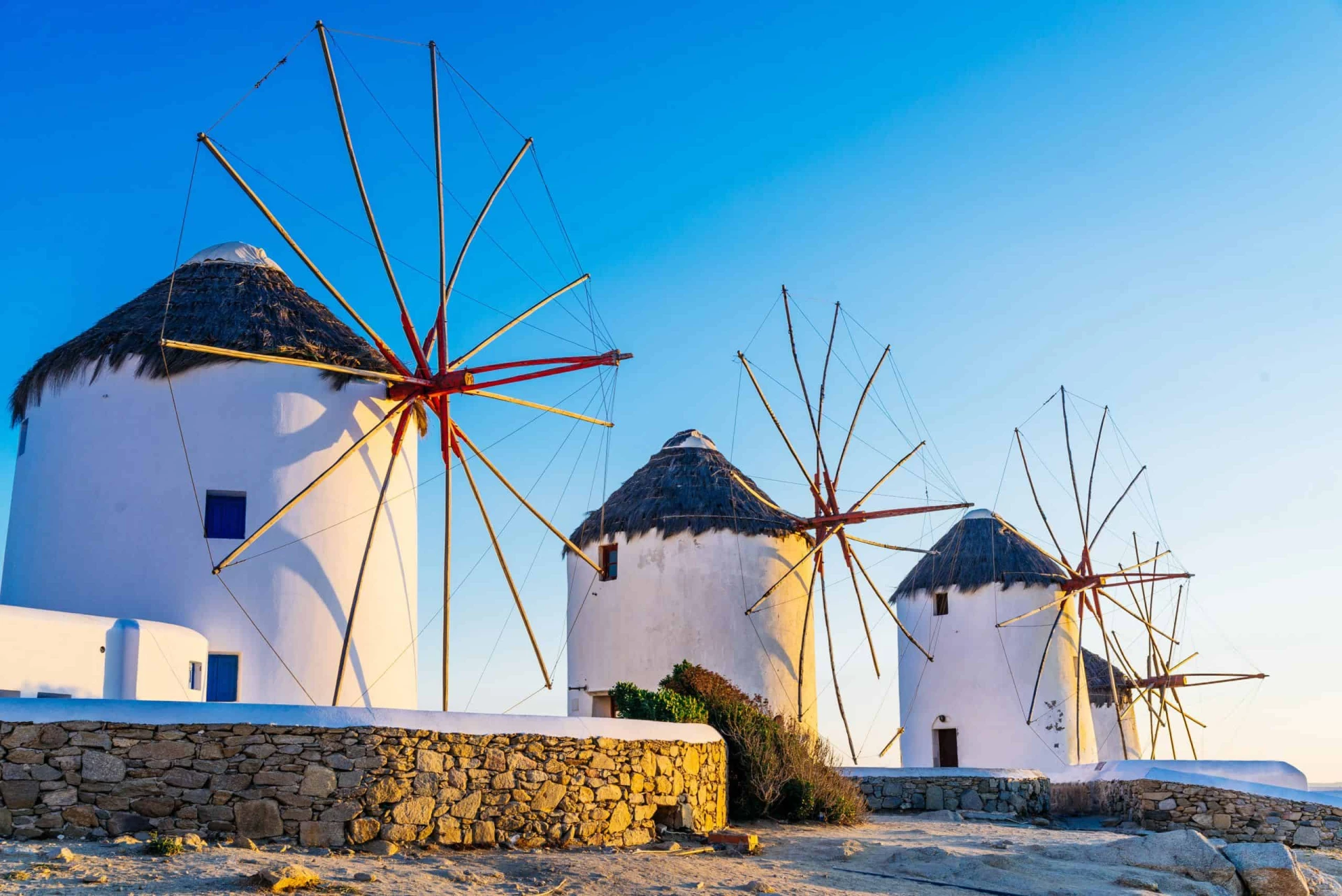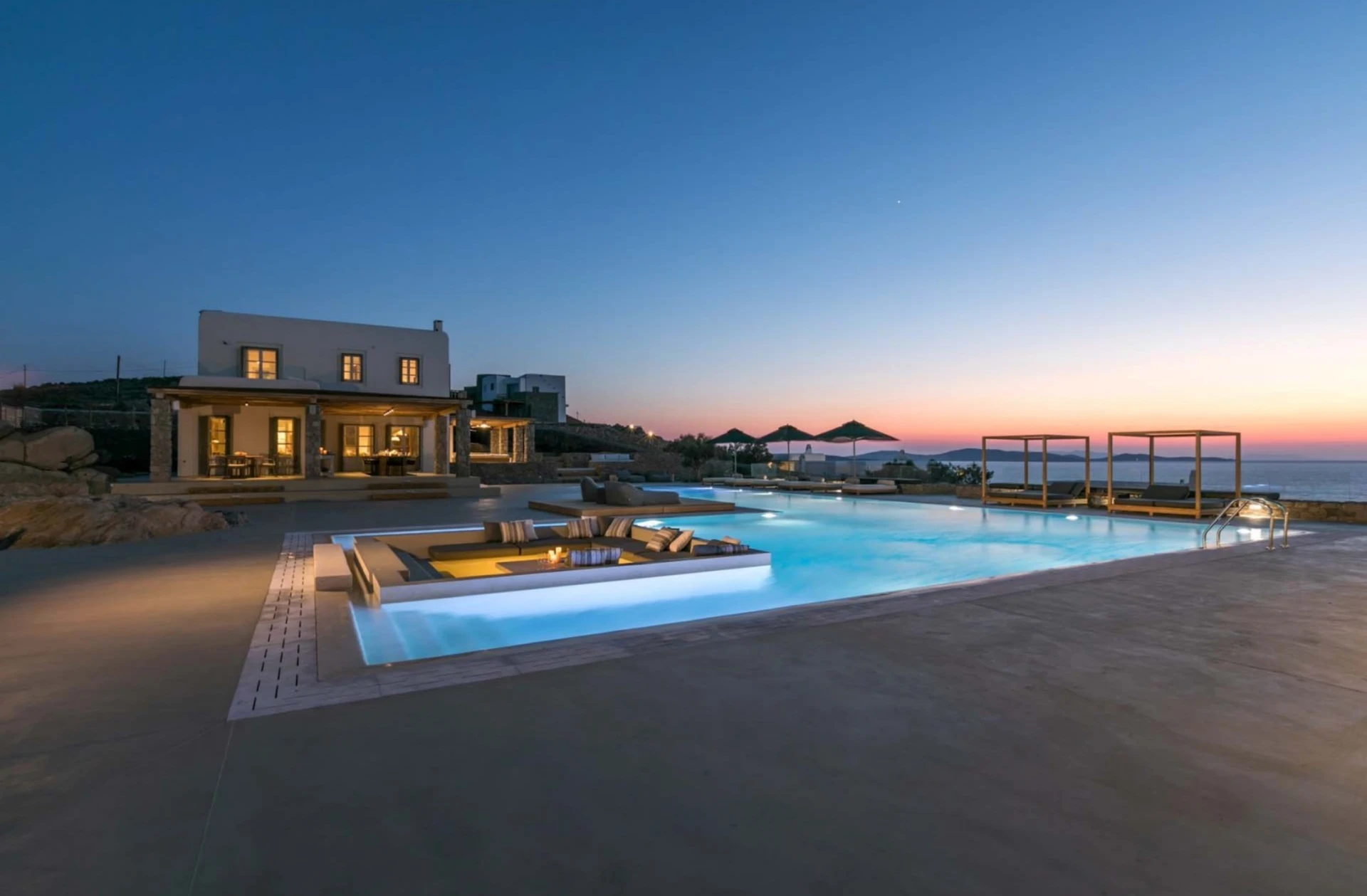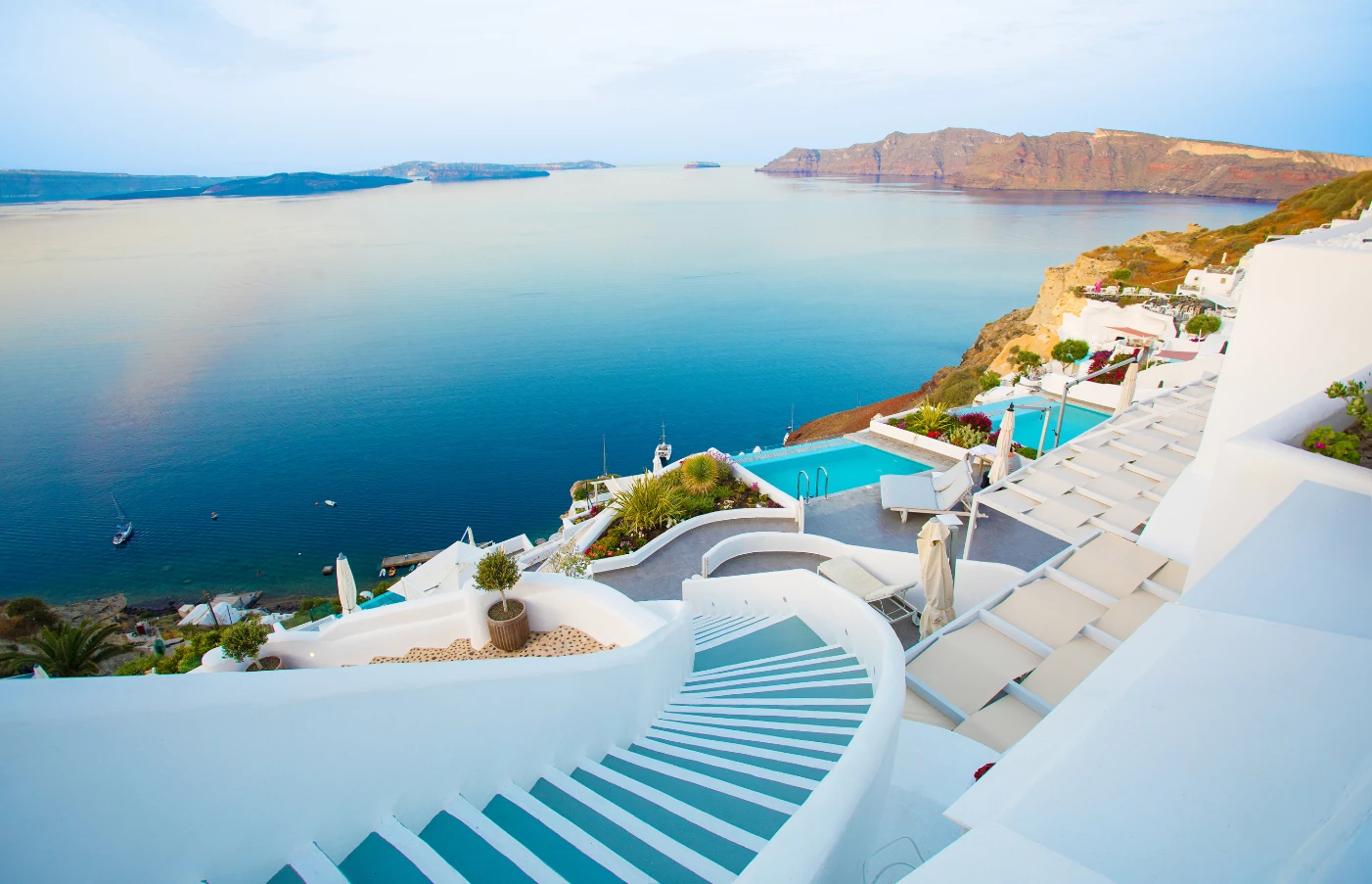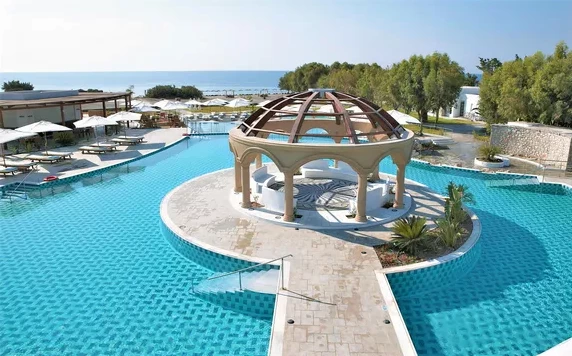Discover the red lava cliffs and sands of Red Beach.
Also known as Kokkini Beach, Red Beach gets its nickname from the signature hue of its sand and surrounding cliffs. The vibrant crimson color comes from iron oxide minerals deposited from the area’s volcanic origins. Sitting at the base of giant 300-foot reddish rock walls, vibrant red sands slope into the turquoise Aegean Sea – creating a breathtaking contrast of colors. This natural beauty evokes a primordial, almost otherworldly atmosphere.
Is it hard to get to Red Beach Santorini?
Accessible only by boat or hiking trail, Red Beach enjoys isolation that enhances its allure. Saying that, getting there is still simple. Boats depart regularly from Akrotiri and Perissa, dropping visitors into paradise after a 15-minute ride. Adventurous types can also walk to Red Beach along a rough but scenic path from nearby Ancient Thera. Your reward is having this jewel practically all to yourself, away from Santorini’s bustling tourists spots.
Once there, find a spot on the rust-colored sands to relax and soak in the majestic environment. Red Beach isn’t the largest, but the shimmering water beckons for a refreshing swim without crowds. Float lazily in the sheltered cove watching the cliffs change from amber to deep burgundy when struck by the sun. Umbrellas and sun loungers are available, though amenities are pleasantly limited, keeping the beach unspoiled.
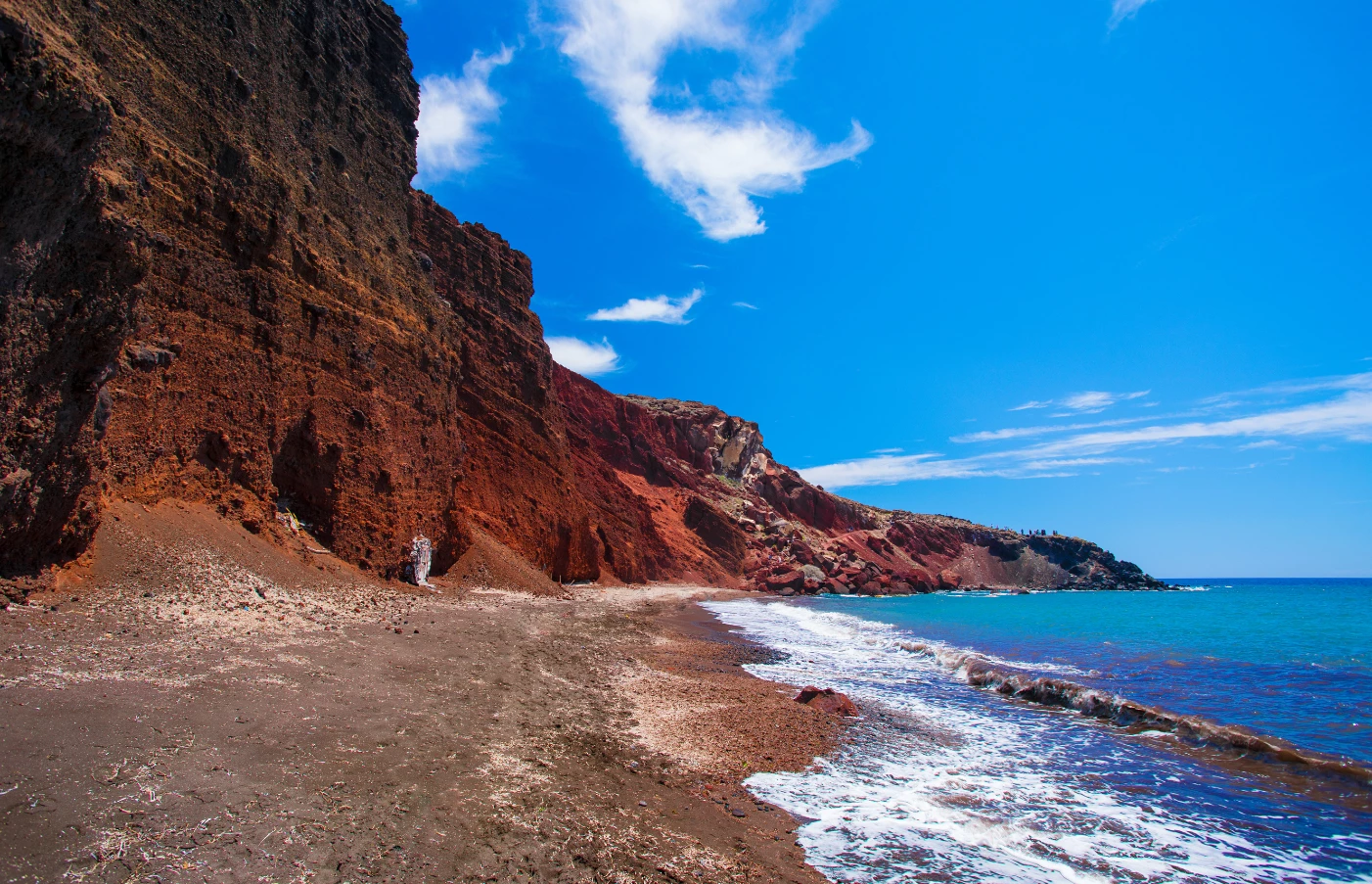
Is Red Beach good for swimming?
Red Beach is ideal for swimming. It’s usually lovely and warm between the months of May and September. The beach is located in a small cove which means the waves remain relatively calm all summer, so swimmers can enjoy steady, warm waters.
We Suggest...
Athens, Mykonos, Santorini and Naxos
Tailor-MadeDive into an exquisite luxury travel adventure through Greece, where the timeless allure of ancient Athens meets the idyllic charm of iconic Greek islands like Mykonos, Santorini, and Naxos. Begin your journey in Athens, the cradle of civilization, where luxury...
How did Red Beach get its color?
Red Beach gets its distinctive red hue from iron oxide deposits in the volcanic matter that forms its sands and surrounding rock walls. Santorini was shaped by the massive eruption of a volcano around 1600 BCE, which caused the center of the island to collapse and created the flooded caldera visitors admire today.
This cataclysmic event spewed out magma rich with iron and minerals that mixed with the existing rock and sands. When iron oxidizes, it takes on a reddish rust color, hence turning the rocks and particles at Red Beach this vibrant red shade.
You can find clues to this geological history in the black pebbles and volcanic stones mingling with the crimson sands. Within the towering cliffs, streaks of orange, black, and gray reveal the mineral composition. The contrast of the red sands against the blue Aegean Sea makes the beach seem beautifully otherworldly.
In fact, Santorini hosts other colored beaches beyond the famous Red Beach. The island also entices visitors to White Beach, whose pale cliffs are mineral-rich; and Black Beach, with its dark volcanic sands and stones.
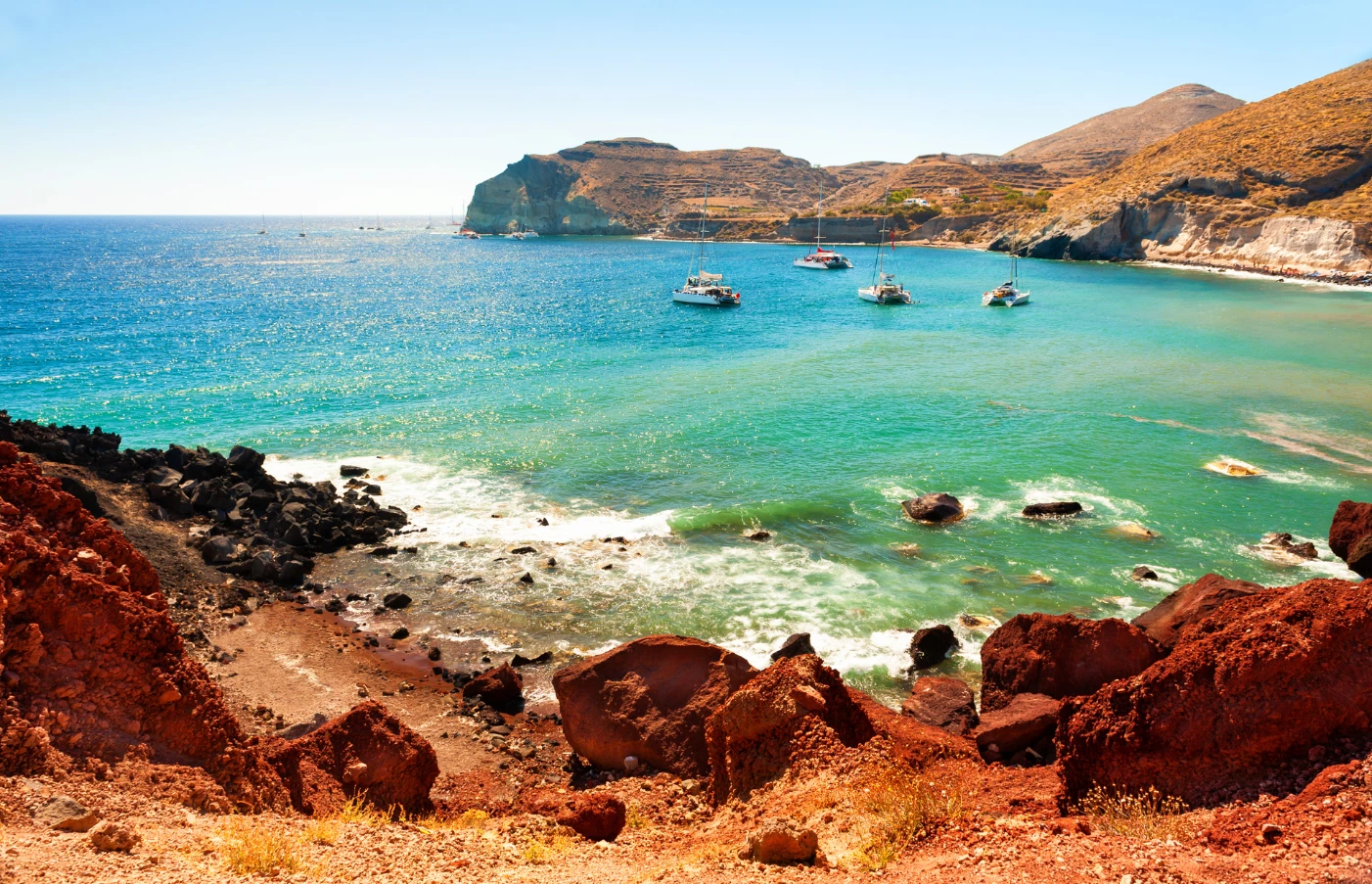
Why is it worth visiting Red Beach?
Travelers longing to discover Santorini’s wild beauty beyond the typical tourist track will find their Shangri-La at Red Beach. Its raw, volcanic environment enchants the adventurous, while its tranquility soothes the soul. Let your senses come alive surrounded by the unique splendor of Red Beach. Gaze at towering rust-hued cliffs while warm sands and crystalline waters sparkle between your toes. Fall under the spell of the Greek Islands in one of Santorini’s most stunning and iconic havens.
